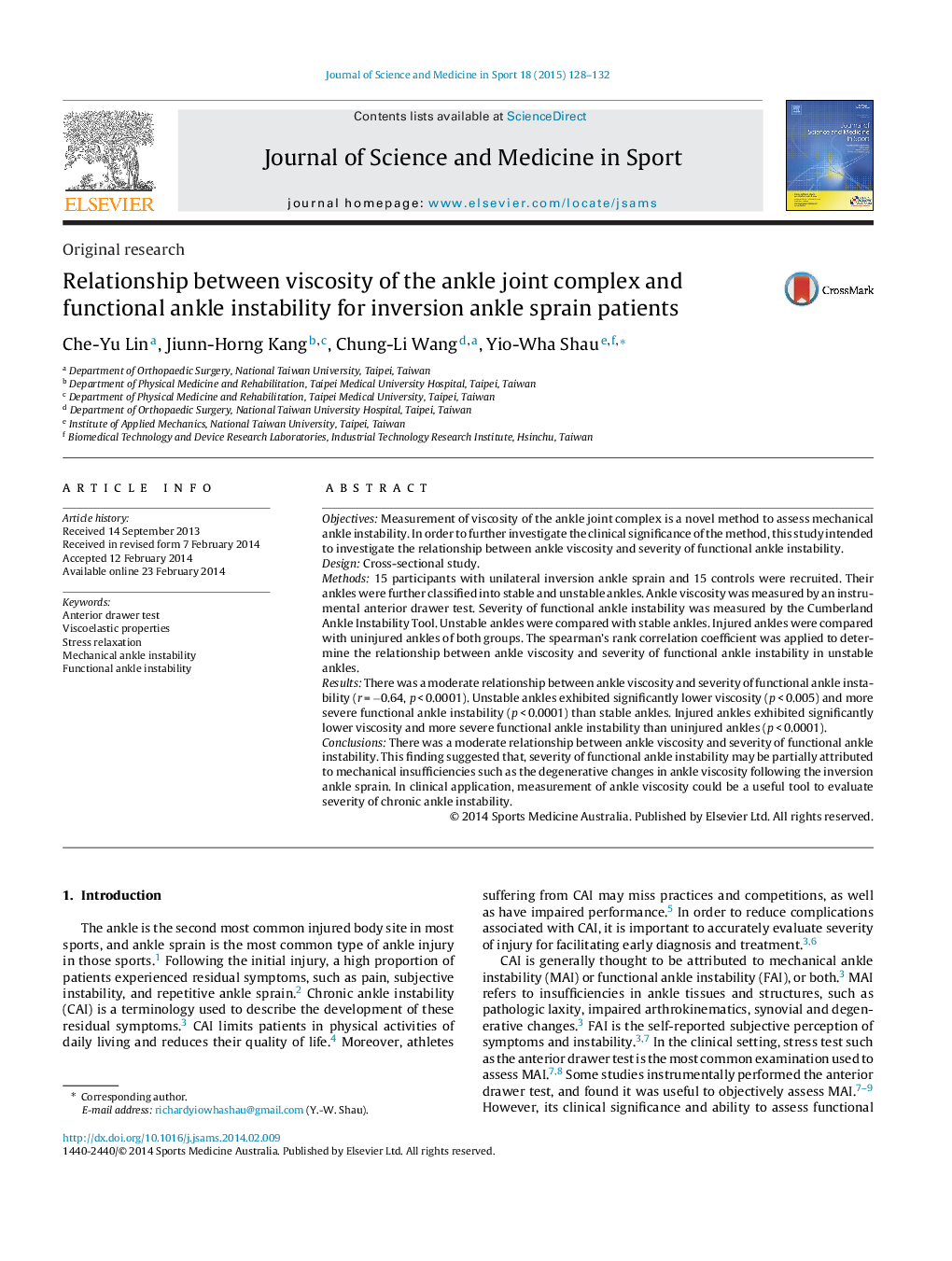| Article ID | Journal | Published Year | Pages | File Type |
|---|---|---|---|---|
| 5874592 | Journal of Science and Medicine in Sport | 2015 | 5 Pages |
ObjectivesMeasurement of viscosity of the ankle joint complex is a novel method to assess mechanical ankle instability. In order to further investigate the clinical significance of the method, this study intended to investigate the relationship between ankle viscosity and severity of functional ankle instability.DesignCross-sectional study.Methods15 participants with unilateral inversion ankle sprain and 15 controls were recruited. Their ankles were further classified into stable and unstable ankles. Ankle viscosity was measured by an instrumental anterior drawer test. Severity of functional ankle instability was measured by the Cumberland Ankle Instability Tool. Unstable ankles were compared with stable ankles. Injured ankles were compared with uninjured ankles of both groups. The spearman's rank correlation coefficient was applied to determine the relationship between ankle viscosity and severity of functional ankle instability in unstable ankles.ResultsThere was a moderate relationship between ankle viscosity and severity of functional ankle instability (r = â0.64, p < 0.0001). Unstable ankles exhibited significantly lower viscosity (p < 0.005) and more severe functional ankle instability (p < 0.0001) than stable ankles. Injured ankles exhibited significantly lower viscosity and more severe functional ankle instability than uninjured ankles (p < 0.0001).ConclusionsThere was a moderate relationship between ankle viscosity and severity of functional ankle instability. This finding suggested that, severity of functional ankle instability may be partially attributed to mechanical insufficiencies such as the degenerative changes in ankle viscosity following the inversion ankle sprain. In clinical application, measurement of ankle viscosity could be a useful tool to evaluate severity of chronic ankle instability.
